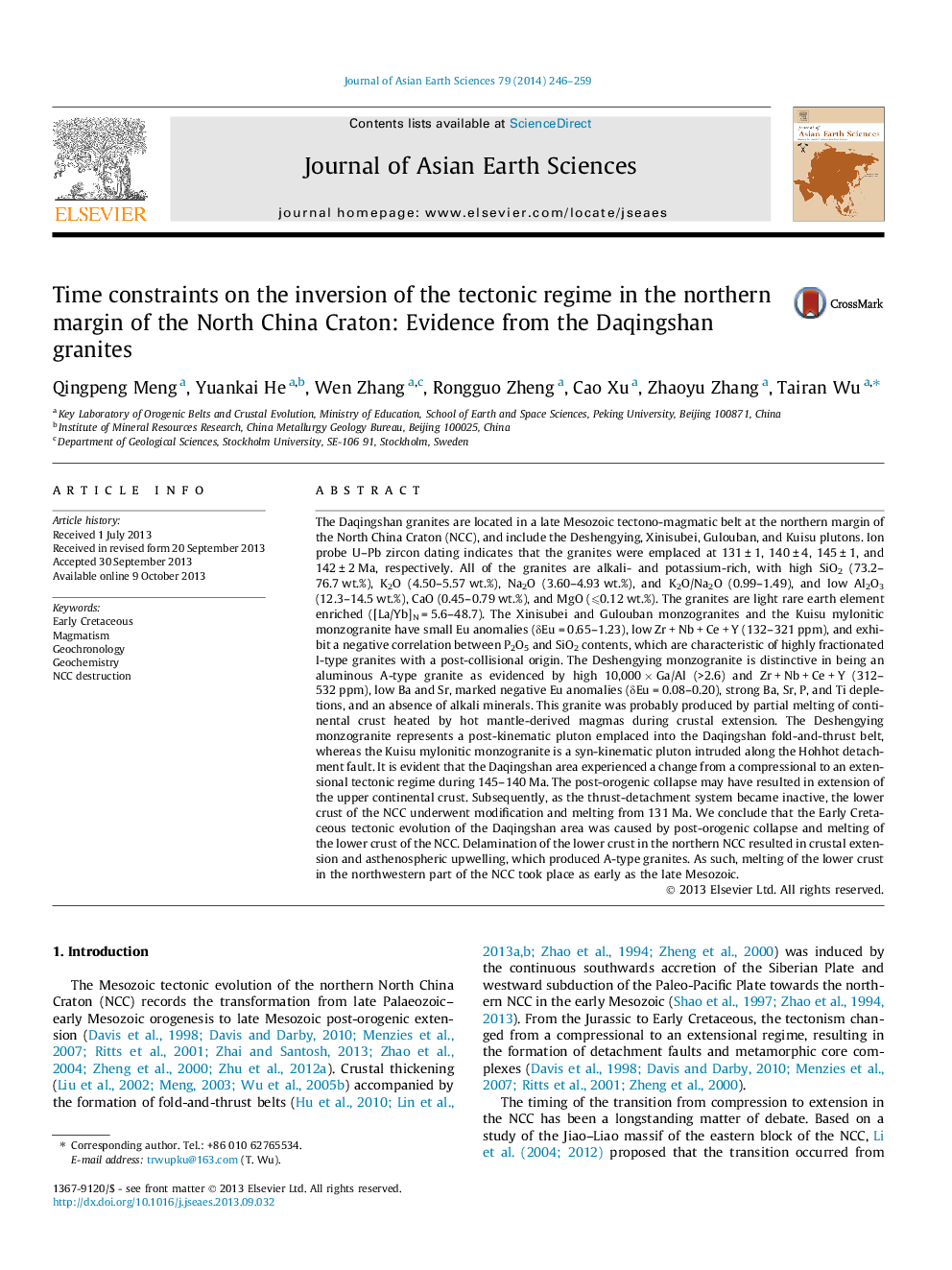| Article ID | Journal | Published Year | Pages | File Type |
|---|---|---|---|---|
| 4730905 | Journal of Asian Earth Sciences | 2014 | 14 Pages |
•Inversion of tectonic regime from compression to extension at 145–140 Ma.•Lower crustal destruction of the northern North China Craton, especially for its western part.•Delamination leading to extension, upwelling and lower crustal melting.
The Daqingshan granites are located in a late Mesozoic tectono-magmatic belt at the northern margin of the North China Craton (NCC), and include the Deshengying, Xinisubei, Gulouban, and Kuisu plutons. Ion probe U–Pb zircon dating indicates that the granites were emplaced at 131 ± 1, 140 ± 4, 145 ± 1, and 142 ± 2 Ma, respectively. All of the granites are alkali- and potassium-rich, with high SiO2 (73.2–76.7 wt.%), K2O (4.50–5.57 wt.%), Na2O (3.60–4.93 wt.%), and K2O/Na2O (0.99–1.49), and low Al2O3 (12.3–14.5 wt.%), CaO (0.45–0.79 wt.%), and MgO (⩽0.12 wt.%). The granites are light rare earth element enriched ([La/Yb]N = 5.6–48.7). The Xinisubei and Gulouban monzogranites and the Kuisu mylonitic monzogranite have small Eu anomalies (δEu = 0.65–1.23), low Zr + Nb + Ce + Y (132–321 ppm), and exhibit a negative correlation between P2O5 and SiO2 contents, which are characteristic of highly fractionated I-type granites with a post-collisional origin. The Deshengying monzogranite is distinctive in being an aluminous A-type granite as evidenced by high 10,000 × Ga/Al (>2.6) and Zr + Nb + Ce + Y (312–532 ppm), low Ba and Sr, marked negative Eu anomalies (δEu = 0.08–0.20), strong Ba, Sr, P, and Ti depletions, and an absence of alkali minerals. This granite was probably produced by partial melting of continental crust heated by hot mantle-derived magmas during crustal extension. The Deshengying monzogranite represents a post-kinematic pluton emplaced into the Daqingshan fold-and-thrust belt, whereas the Kuisu mylonitic monzogranite is a syn-kinematic pluton intruded along the Hohhot detachment fault. It is evident that the Daqingshan area experienced a change from a compressional to an extensional tectonic regime during 145–140 Ma. The post-orogenic collapse may have resulted in extension of the upper continental crust. Subsequently, as the thrust-detachment system became inactive, the lower crust of the NCC underwent modification and melting from 131 Ma. We conclude that the Early Cretaceous tectonic evolution of the Daqingshan area was caused by post-orogenic collapse and melting of the lower crust of the NCC. Delamination of the lower crust in the northern NCC resulted in crustal extension and asthenospheric upwelling, which produced A-type granites. As such, melting of the lower crust in the northwestern part of the NCC took place as early as the late Mesozoic.
